
Charming and refined: Gitta’s hoya obsession blossomed when she met her spouse—and his impressive hoya carnosa
Gitta Forsblom has fallen for the lively, refined charm of hoyas. Her obsession began in the 1980s, when she met her spouse and his hoya carnosa. Take this passionate hobbyist’s tips on propagating and growing these captivating plants.
Long vines, round, narrow, pointed leaves, glossy surfaces, fragrance, greenery—hoyas have everything Gitta Forsblom values in a houseplant.
“Hoyas feel vibrant and strong. Their character is nicely wild yet at the same time refined and traditional.”
In addition to fabric curtains, the windows in Gitta’s home are adorned with lush, abundant swathes of hoyas, also called wax plants or porcelain flowers. Gitta’s collection includes around 45 species and varieties. She hasn’t even counted the total number of plants.
“It would be nice to settle for just ten species, but I simply had to have more. There really is a light jungle vibe in here,” Gitta says with a laugh.
”The passionate hobby began in the late 1980s, when Gitta met her spouse Roger, who had a hoya carnosa.”
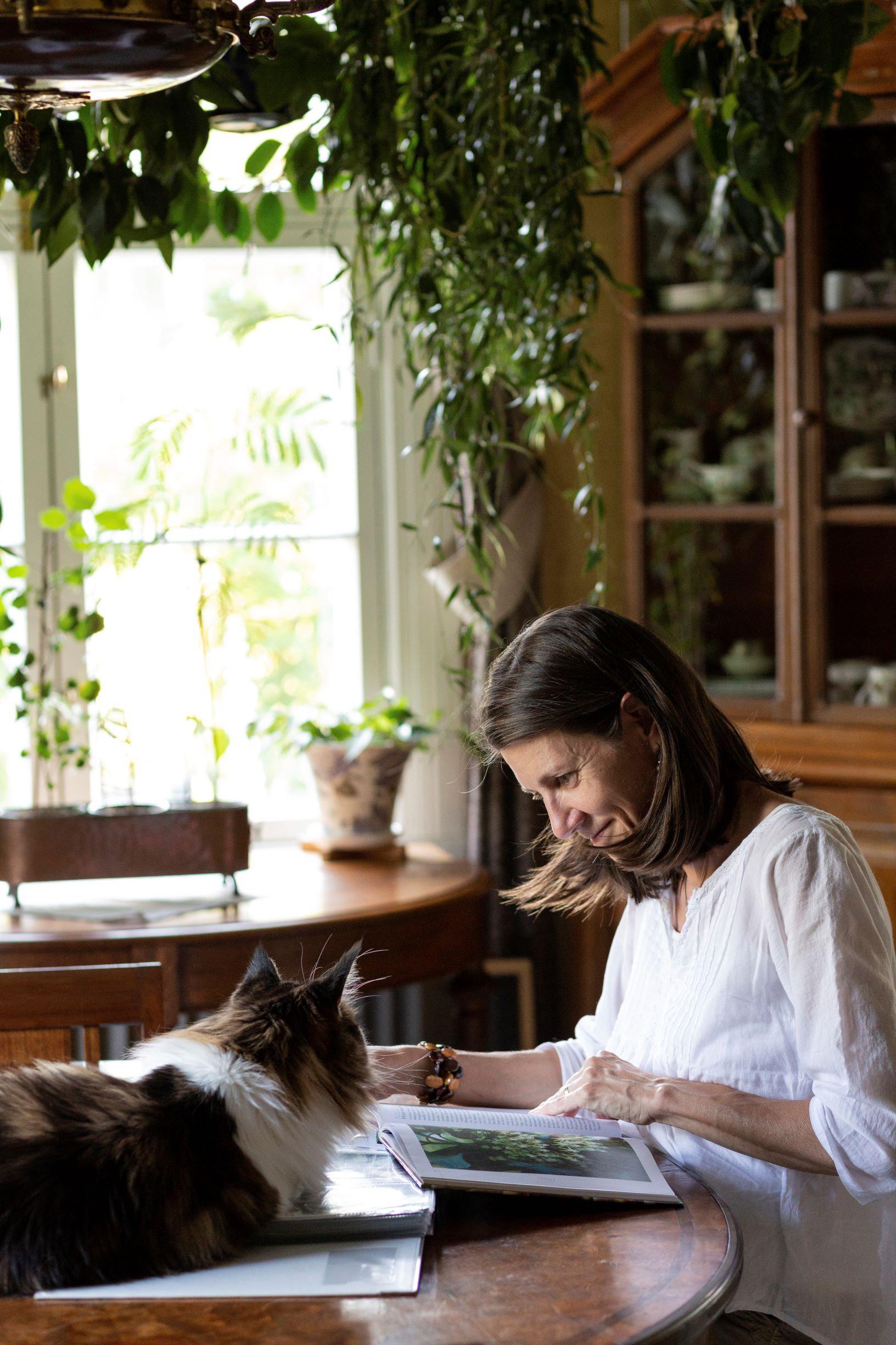
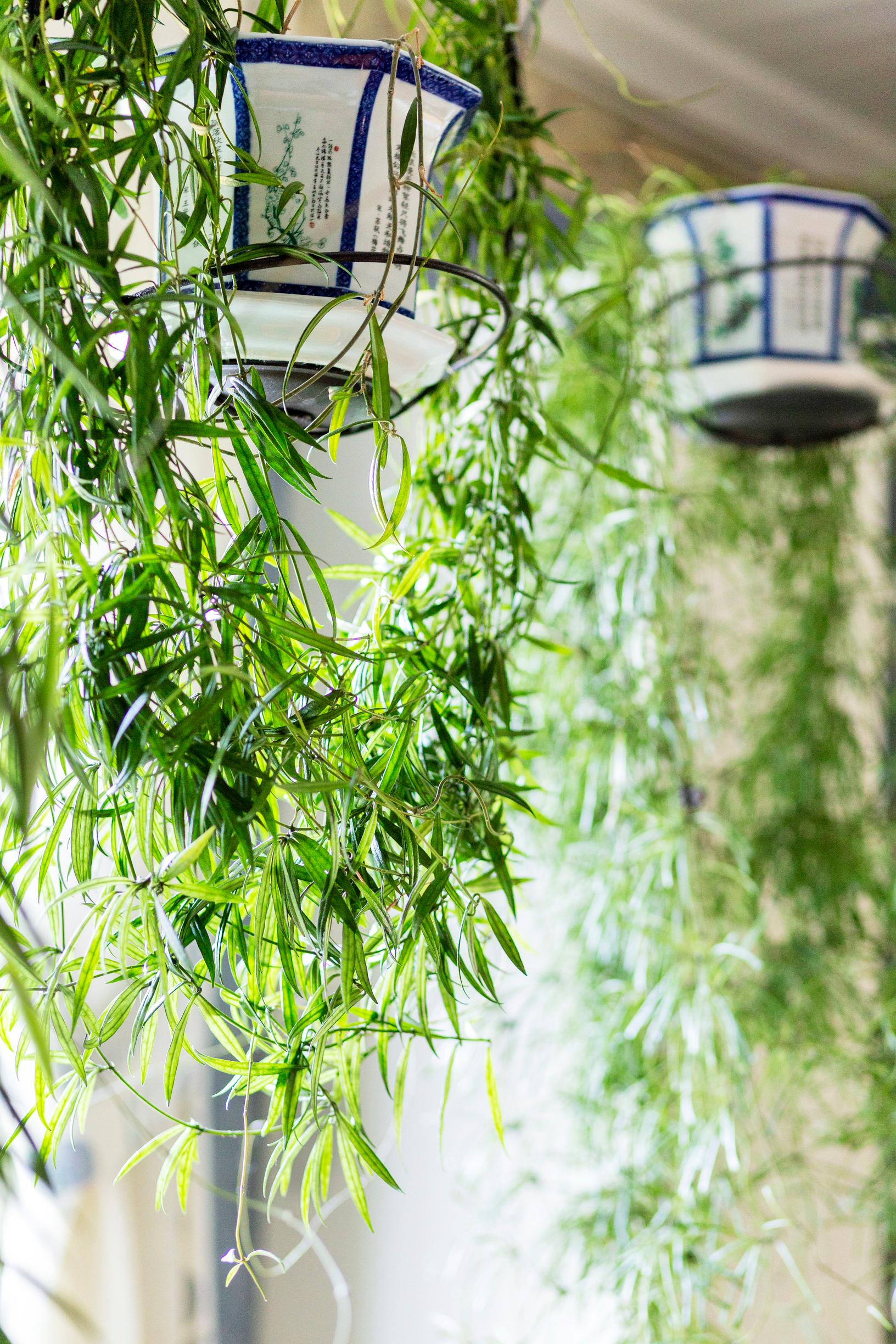
”There really is a light jungle vibe here.”
The passionate hobby began in the late 1980s, when Gitta met her spouse Roger, who had a hoya carnosa. Roger had received his plant as a cutting from his mother, and it was already quite impressive. Gitta was especially captivated by the plant’s showy, fragrant blooms. Her enthusiasm was further fueled by a book on hoyas by Eva-Karin Widberg titled Porslinsblommor – att odla och älska, which Gitta received as a birthday present.
“The first hoya I ever bought was the compact ‘Compacta’ variety because it looked so wild with its twisted leaves,” Gitta recalls.
It didn’t survive its first winter because the windows were shaded by large trees and didn’t provide enough light. Gitta didn’t let that unlucky experience discourage her. She bought every hoya she found and set up grow lights to help them through the dark months.
She built up her plant knowledge by photographing the leaves and flowers and by recording cultivation notes and blooming times. At first, she kept her hoyas on shelves in their pots, but as the plants grew bigger and her collection expanded, she searched for hanging baskets that could be attached to window frames, letting the vines drape down or climb up the chains.
Read also: Tips for caring for hoyas
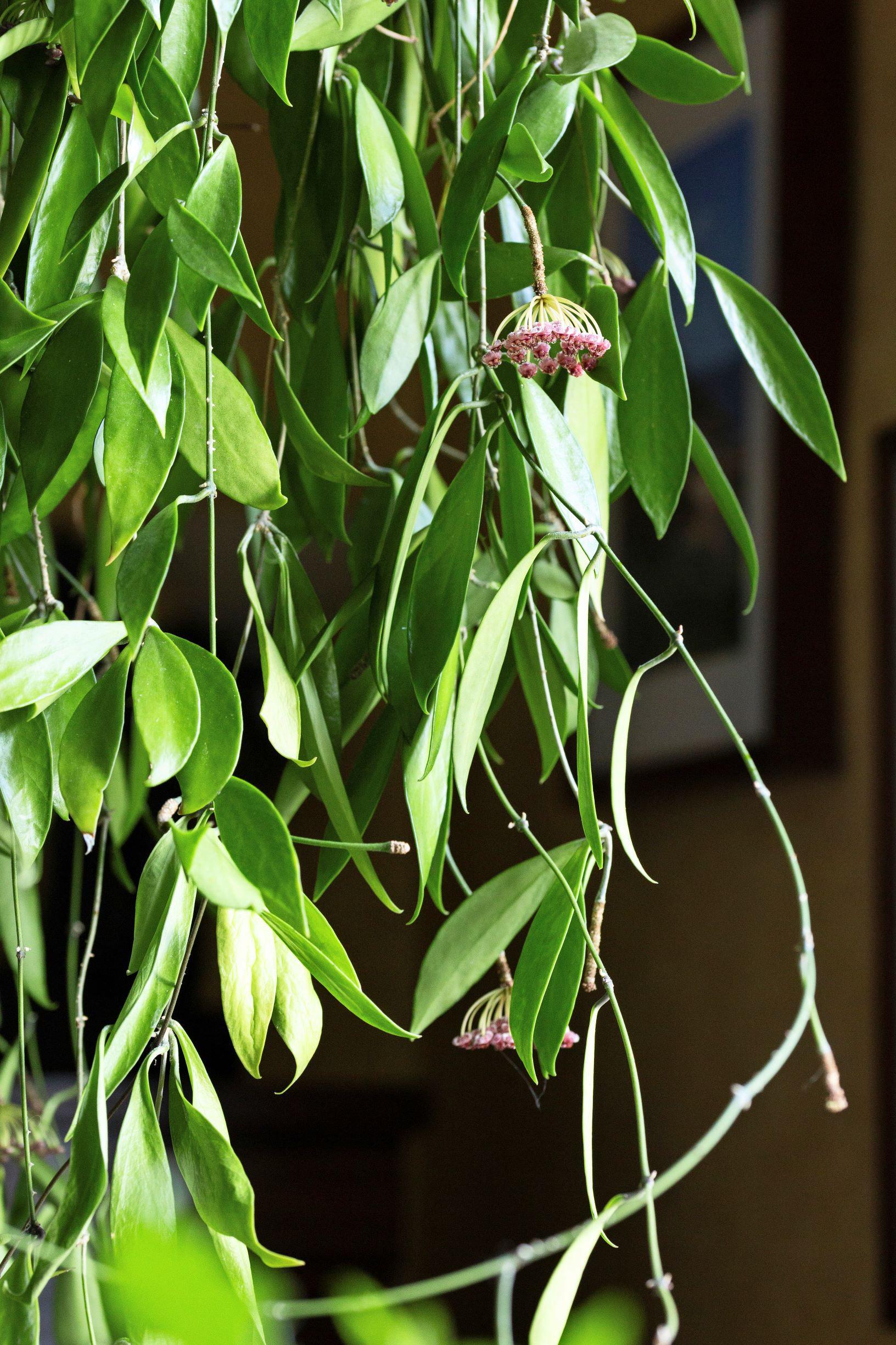
”The window space here is in danger of running out.”
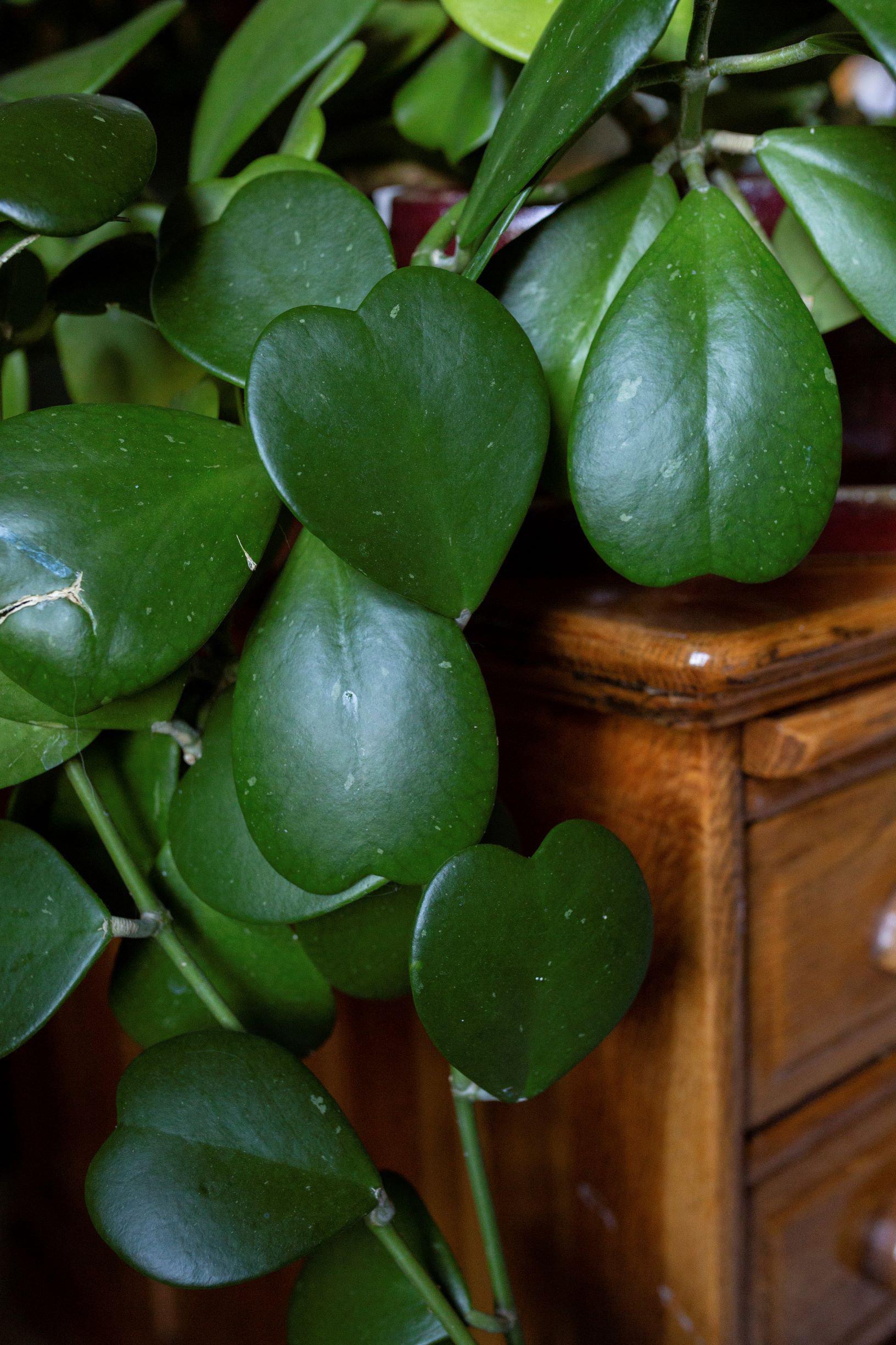
Hoyas prefer a light, airy growing medium, so Gitta pots them in soil mixed with perlite. Sustainability is important to her, so she always uses organic soil.
Gitta propagates hoyas from cuttings, although you might wait two or three—sometimes even ten—years for them to bloom. One variety is more challenging than the others.
“It’s hard to get the heart hoya to root. It won’t grow from a single heart-shaped leaf, even though you often see just a leaf in soil for sale.”
During hot, dry periods, Gitta waters her hoyas a couple of times a week. In winter, watering once every two weeks can be enough. The top layer of soil can dry a bit, as they don’t like soggy soil. Around Christmas and in spring, she mists the leaves to remove dust.
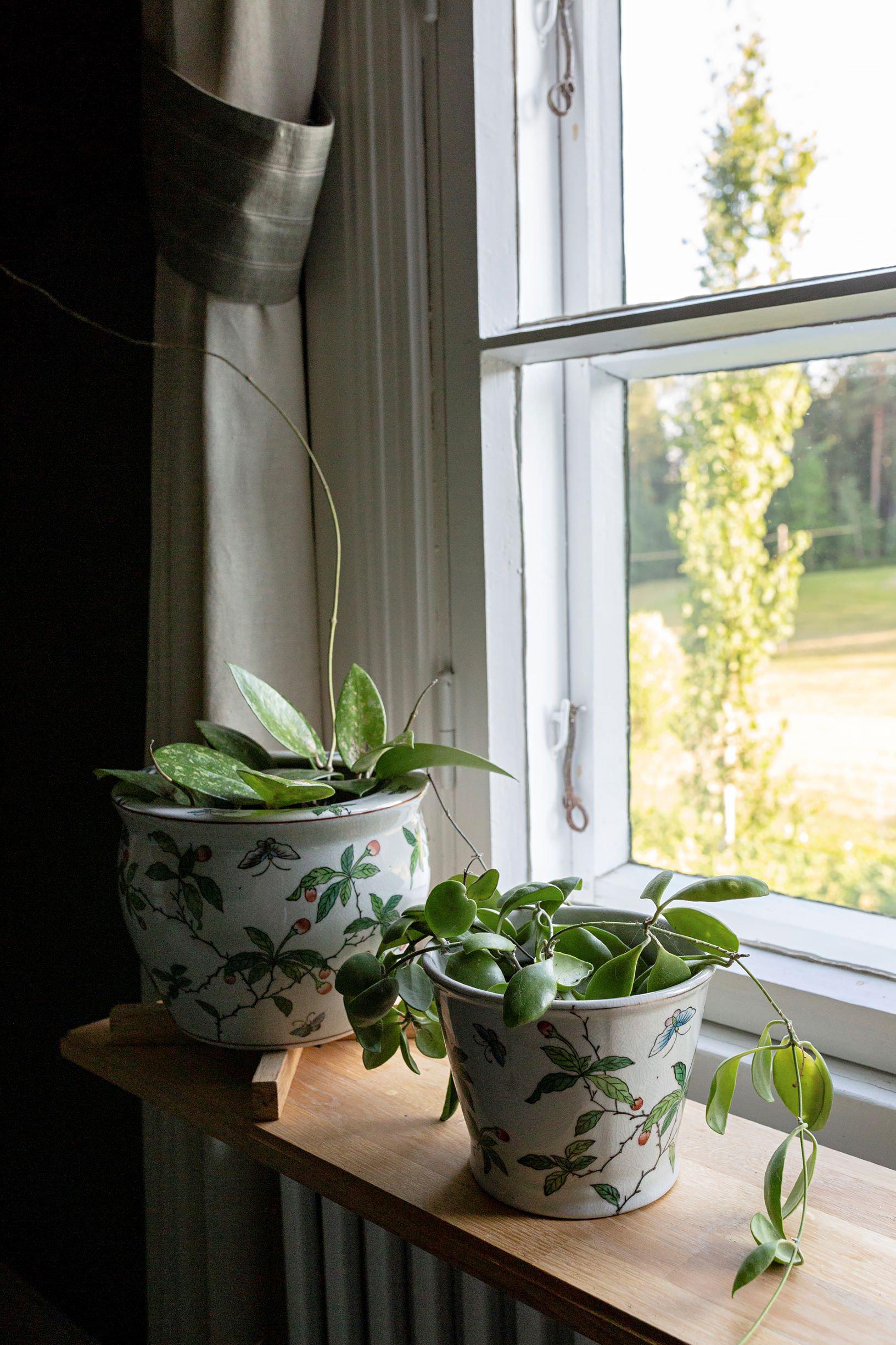
Gitta fertilizes her porcelain flowers only during bloom time, since heavy fertilization encourages leaf growth in place of blossoms. She prefers to swap out the soil outdoors.
“Sometimes I take an old clothes rack and a worktable outside and haul all the hanging baskets into the fresh air for a repotting session.”
Gitta no longer dreams of expanding her collection, though she admits she would still love a demanding hoya imperialis with its large blooms. She’s also drawn to the ‘Compacta’ variety that got her hooked in the first place.
“A bigger house with more windows would be nice too. The window space here is about to run out.”
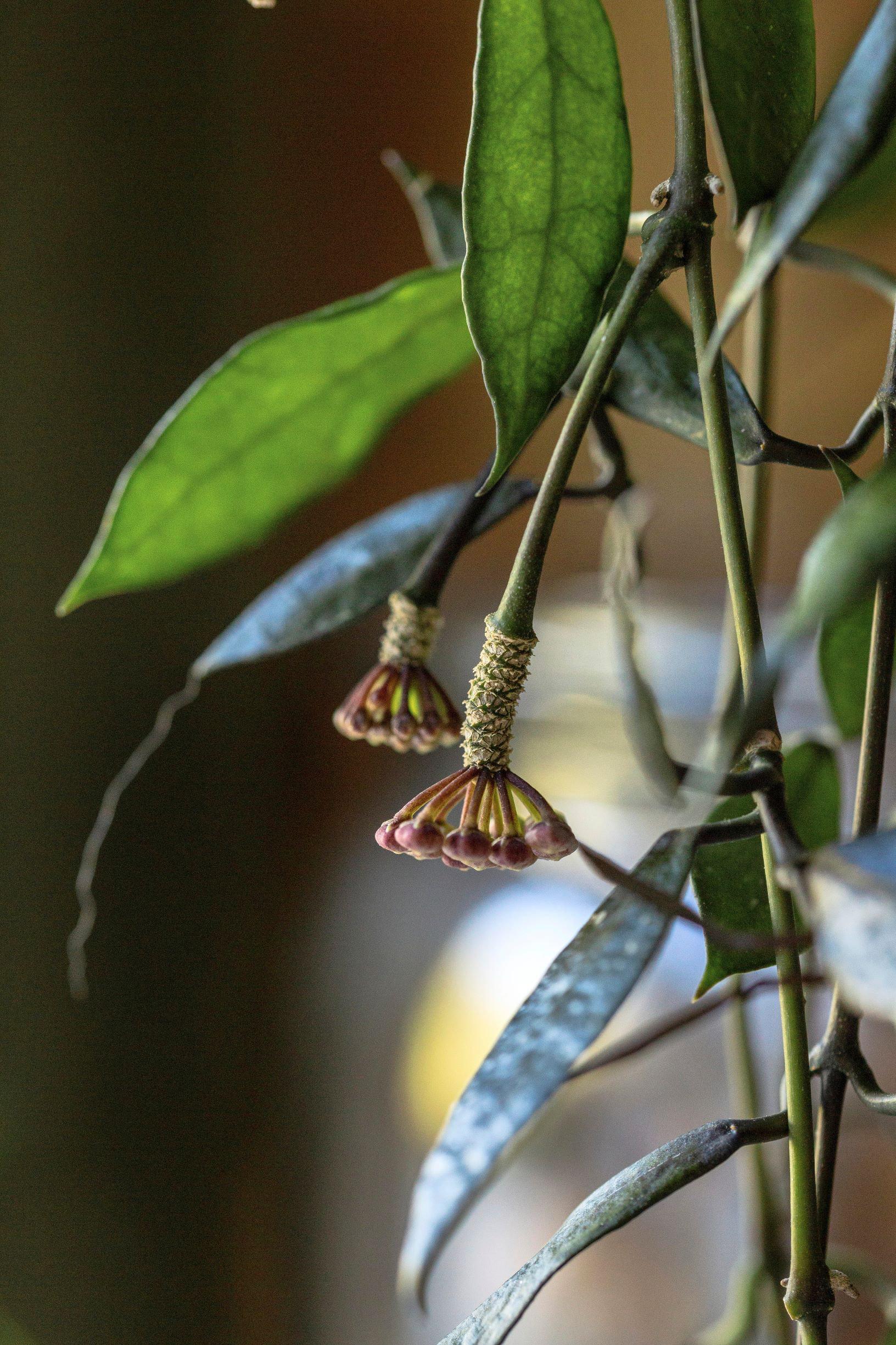
Gitta’s tips for growing hoyas
1. Grow from cuttings
You can propagate porcelain flowers from cuttings. Snip a stem that’s growing well, with no buds or flowers. Put the base of the cutting in seedling soil. Cover the pot and cutting with a plastic bag, piercing a few holes for ventilation. This creates a mini greenhouse for the cutting.
2. Lighten the growing medium
Repot hoyas into fresh soil every 3–4 years. Lighten standard houseplant soil with perlite, a volcanic mineral, to create airflow. Every year, remove some old soil from each pot and top up with fresh, nutrient-rich soil. If you’re repotting trailing hanging plants, it’s easier with two people.
3. Combat pests
Heat and dry indoor air in winter can invite pests. The best way to keep them away is to grow healthy plants, since pests target weaker ones more easily. Make sure you water correctly and lightly fertilize during the growing season. Check your plants weekly. If you spot mealybugs, remove the cottony cover and larva with a cotton swab and use organic-approved pesticides. The safest solution is often to discard a heavily infested plant.
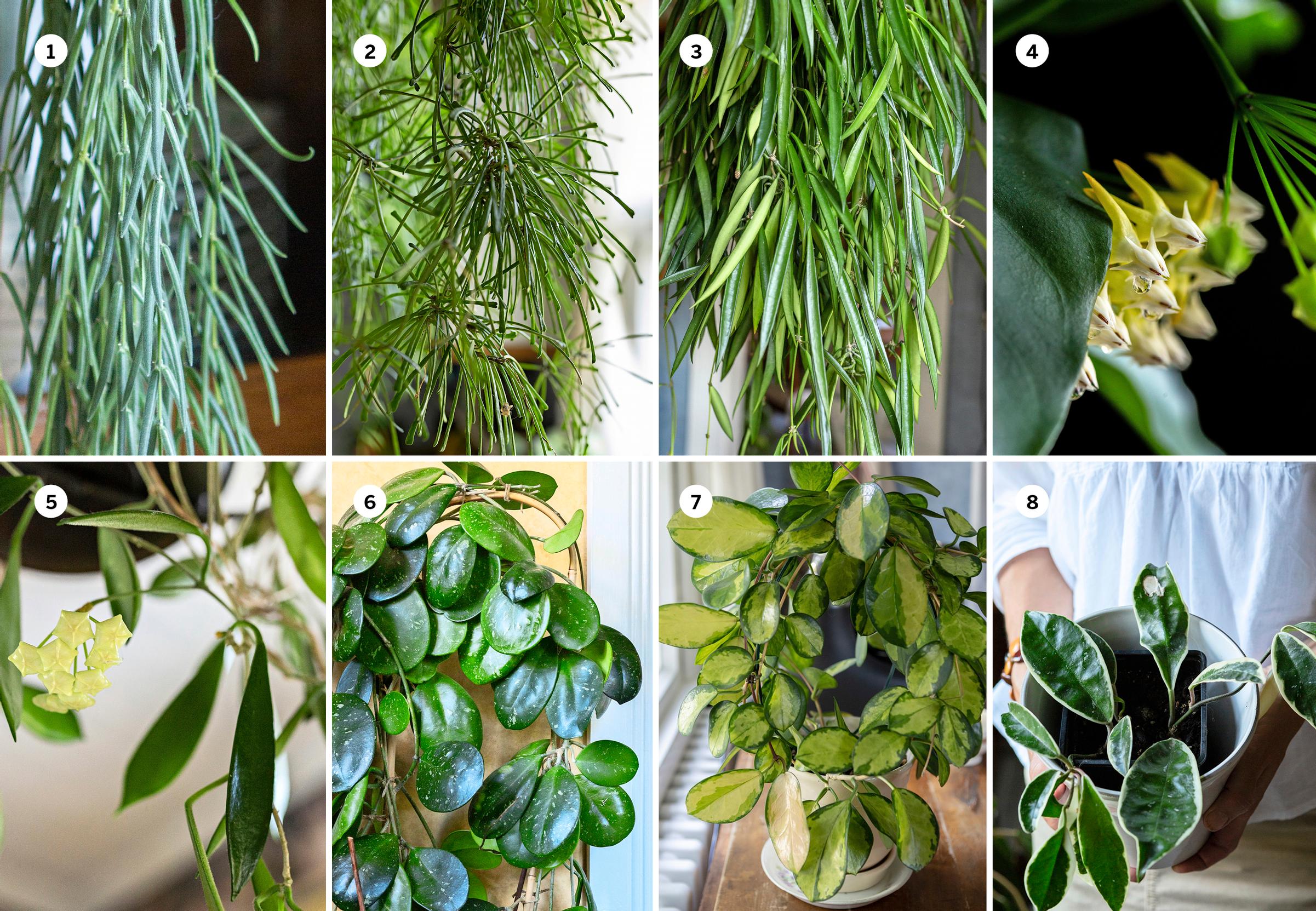
Gitta’s favorites: 8 x hoya
1. Hoya linearis
Produces downward-hanging, curtain-like vines. The white, fragrant blooms are star-shaped.
2. Hoya retusa
Native to India, this species differs from other porcelain flowers. Its leaves are thin and matchstick-like.
3. Hoya kentiana
Thrives in a bright spot. Its thick, leathery leaves can handle an hour or two of direct sunlight.
4. Hoya multiflora
Its star-shaped buds open into rocket-like flowers. It grows vigorously in a warm, humid spot and produces plenty of nectar.
5. Hoya celata
Its noticeable white buds have a star-like center. Often mistaken for the similar ‘White Dragon’ variety, which is a hoya pubicalyx hybrid.
6. Hoya obovata
A large-leaved variety whose blooms give off a rose-like fragrance, just as its name suggests. Even a relatively young plant can begin to flower.
7. Hoya australis ‘Lisa’
A variegated, green-leafed variety whose young leaves can show a blush of red. As the vines mature, they begin to hang down.
8. Hoya carnosa ‘Albomarginata’
A variegated, easy-care variety. You can root its cuttings in small seedling pots.


